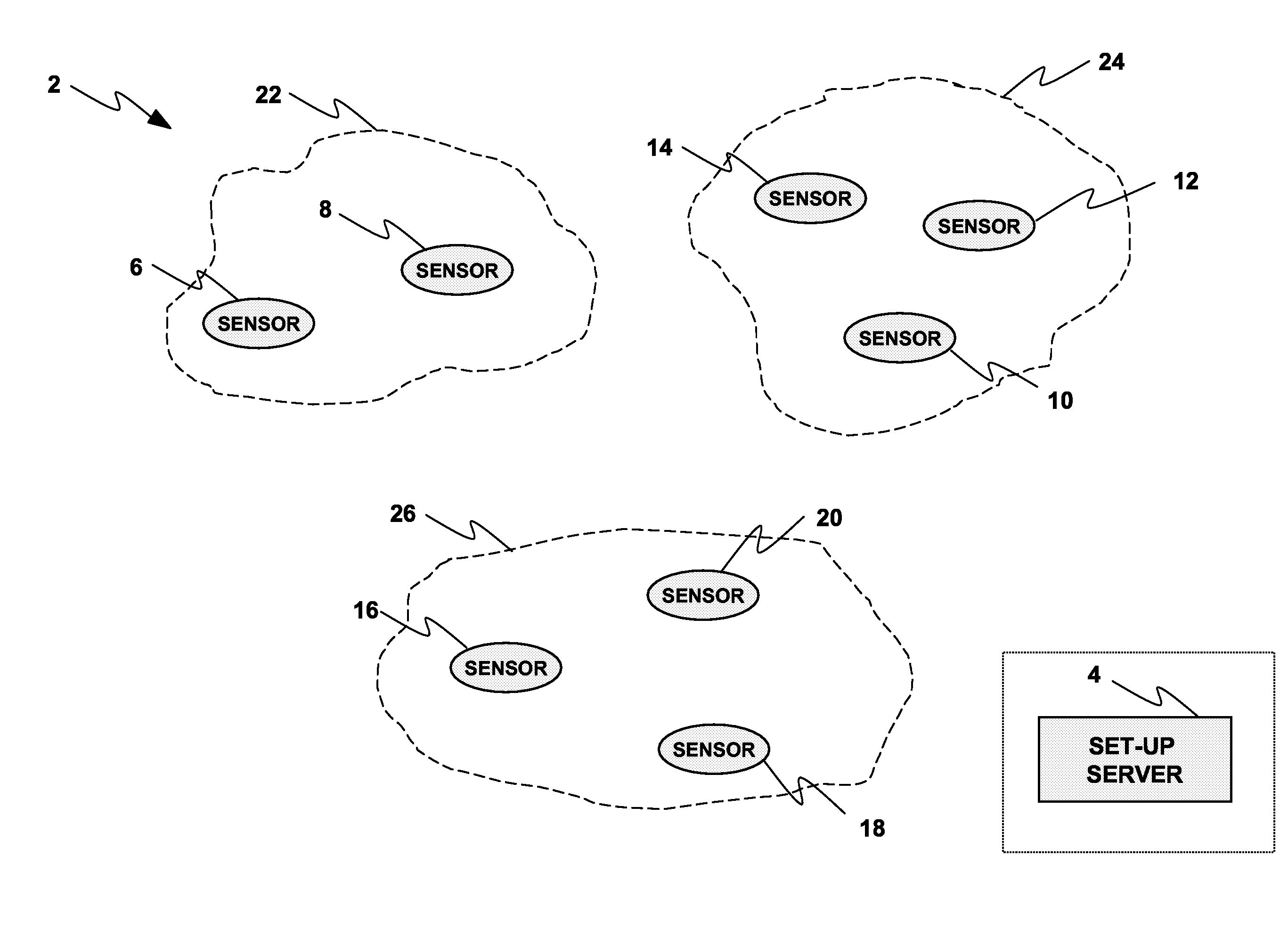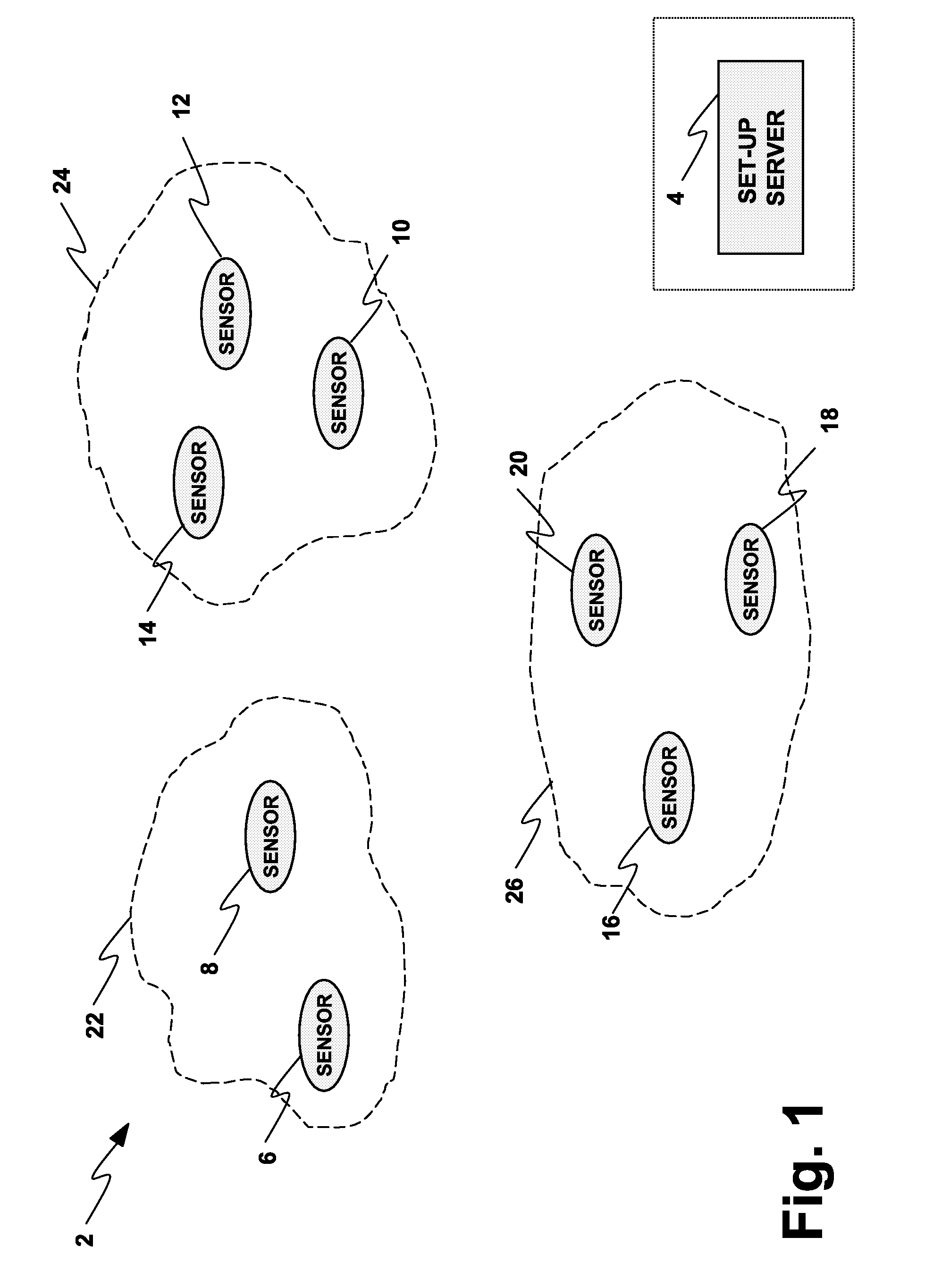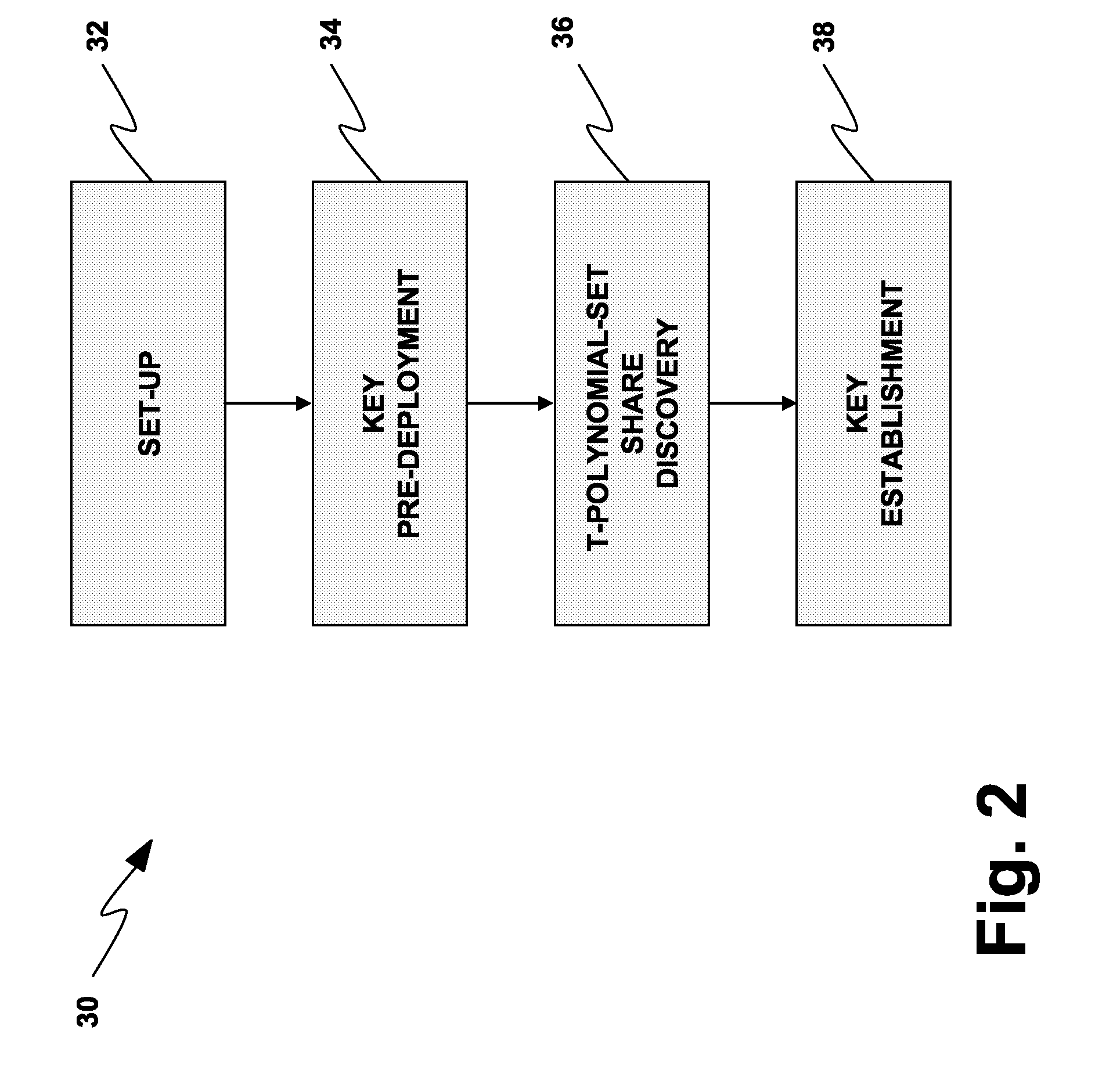Deterministic key pre-distribution and operational key management for moblie body sensor networks
a sensor network and key technology, applied in the field of wireless networks, can solve the problems of limited computational capacity and memory, nodes that are battery powered, and might be left unattended, and achieve the effects of reducing the extent to which the wireless network can be compromised, and reducing the risk of network damag
- Summary
- Abstract
- Description
- Claims
- Application Information
AI Technical Summary
Benefits of technology
Problems solved by technology
Method used
Image
Examples
Embodiment Construction
Deterministic Pairwise Key Pre-distribution System (DPKPS) and Methods
[0053]FIG. 1 illustrates a mobile sensor system 2 that includes a setup server 4, a plurality of wireless sensors 6, 8, 10, 12, 14, 16, 18 and 20 and a plurality of body sensor networks 22, 24, and 26. The set-up server 4 is a security dedicated server, which has an active participation in security only before the deployment of sensors. The wireless sensors 6-20 connect to the set-up server 4 in an initial configuration phase (e.g., pre-deployment) before the sensors 6-20 are used. The set-up server 4 typically resides in a physically protected perimeter, only accessible to authorized personnel. During the deployment phase, the wireless sensors do not have any means of contacting the set-up server. The deployment area is typically publicly accessible. The wireless sensors 6-20 are nodes in charge of collecting and transferring patient medical data. Any of the sensors 6-20 establishes wireless connections with one ...
PUM
 Login to View More
Login to View More Abstract
Description
Claims
Application Information
 Login to View More
Login to View More - R&D
- Intellectual Property
- Life Sciences
- Materials
- Tech Scout
- Unparalleled Data Quality
- Higher Quality Content
- 60% Fewer Hallucinations
Browse by: Latest US Patents, China's latest patents, Technical Efficacy Thesaurus, Application Domain, Technology Topic, Popular Technical Reports.
© 2025 PatSnap. All rights reserved.Legal|Privacy policy|Modern Slavery Act Transparency Statement|Sitemap|About US| Contact US: help@patsnap.com



